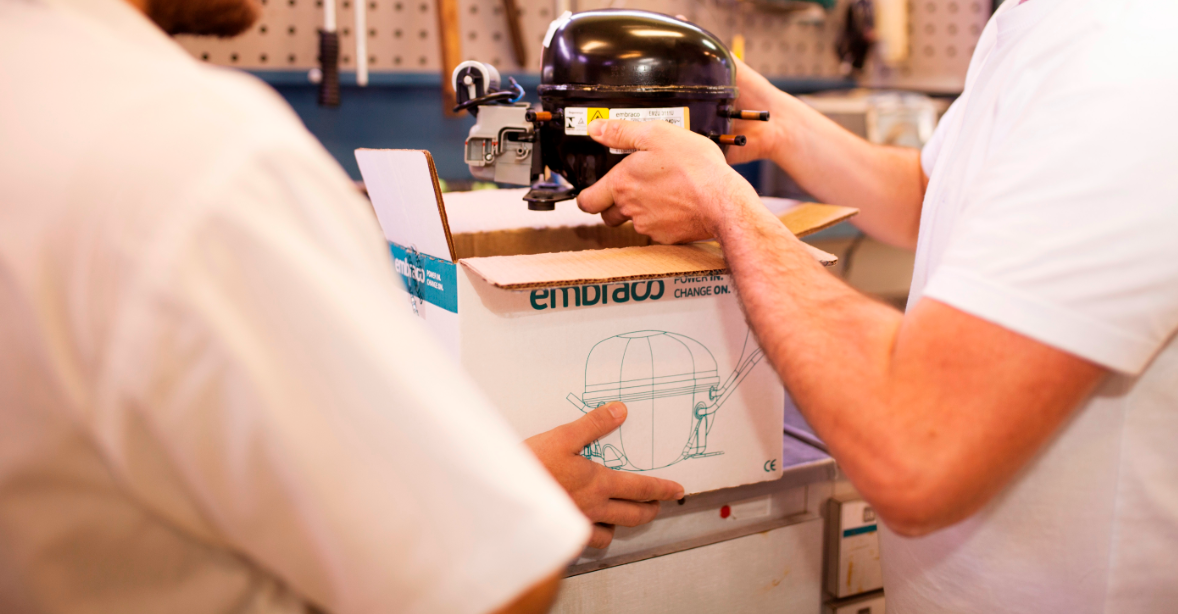It’s well known the importance of the Filter Drier to prevent moisture and impurities in the cooling system. But, what happens when these problems are already occurring at an advanced stage? The Refrigeration Club sought these answers with the support of Embraco, with the technical specialist in refrigeration, Fernando Borba. [box side=”alignright” color=”box-vermelho” pos=”vertical”] There are five main causes of moisture in the system:
- Rupture or perforation of the evaporator tube, allowing ice, water or moisture that may be in this region to enter the cooling circuit;
- Compressor without rubber plugs on service tubes for an extended time period, allowing moisture to enter it;
- System cleaning and vacuum performed inadequately or insufficiently;
- Installation of an already contaminated compressor with moisture (used), even if the vacuum was performed properly;
- Reusing the filter drier.
[/box]
1) Is there a way to eliminate compressor acids? Are they also a result of moisture?
No, once contaminated, we can’t completely remove these impurities, even by changing just the compressor oil. Generally these impurities come from the reaction between the oil and moisture generating acid and alcohol residues, which circulate within the entire tubing line of the refrigeration system including the compressor. The acid chemically reacts with the metals of the internal parts of the compressor, generating a salt called iron carboxylates, which by circulating through the cooling system’s tubing can clog the capillary tube and attach itself to the tubing. Another problem is that the presence of moisture can lead to increased residues inside the housing (salts), a decrease in oil lubricating capacity (lubricity), generating wear by the tribo-chemical process which leads to weakening the compressor’s internal components, and in severe cases, rupture the suction and discharge valve, or even causing compressor lock-up. Embraco doesn’t recommend reusing compressors contaminated with moisture, always suggesting their replacement. Before this process, it’s necessary to clean all refrigeration system tubing with a suitable solvent in order to eliminate all possible residues, perform adequately the vacuum by using a specific pump, never with another compressor. Filter drier replacement is always recommended.
2) What are the consequences of moisture in the system?
For the system, there is cooling capacity loss due to obstructions of the capillary tube / expansion valve, especially by water freezing and or the deposition of carboxylate salts. Furthermore, loss of oil lubricity occurs, causing greater wear on the compressor’s moving parts which can lead to increased energy consumption, or even causing it to break.
3) Why shouldn’t we choose the filter drier by its size or price?
The filter drier can have different sizes according to different manufacturers, and this doesn’t necessarily represent the moisture holding capacity. Filter driers have been specifically designed for a compressor’s refrigerant fluid and lubricating oil mix, so that the drying agent (Molecular Sieves) only absorbs moisture and not the rest of the components (oil and refrigerant).
4) How much influence does the amount of Molecular Sieves in the filter have?
The necessary amount of filter desiccant agent varies according to the size of the cooling circuit that each manufacturer designed into their products, therefore, it’s recommended to always maintain the same desiccant amount of the original filter – never lower.



